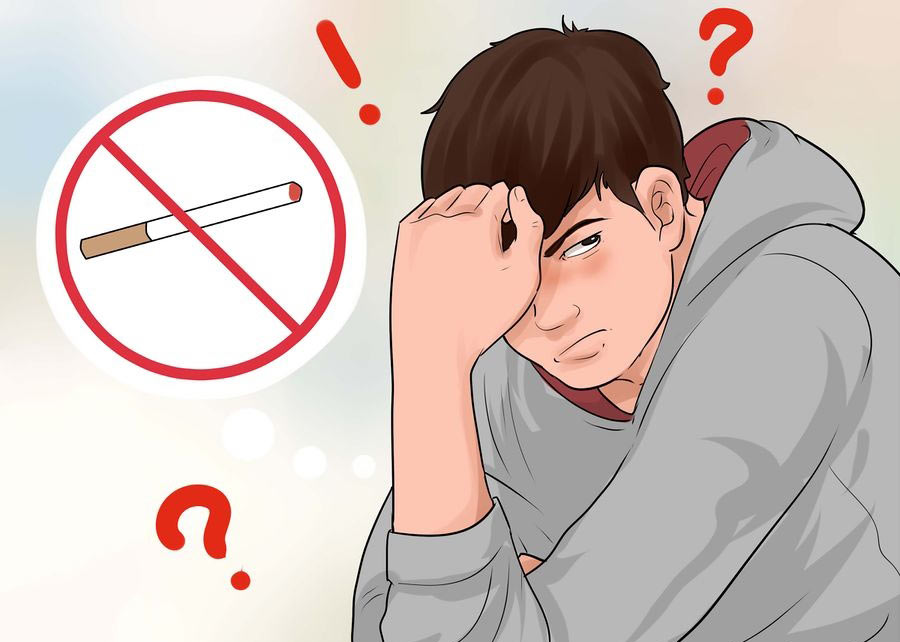
Source: wikiHow
Investigators at the Scripps Research Institute (TSRI) have discovered that a lipid in brain cells may act as a switch to increase or decrease the motivation to consume nicotine. The team says its findings in animal models point to a way that a drug might someday return this lipid to normal levels, perhaps making it easier for smokers to quit.
“We knew these lipids were implicated in nicotine addiction, but until now manipulating their synthesis was not pharmacologically feasible,” said Loren Parsons, Ph.D., TSRI professor and senior author of the new report.
The study (“Diacylglycerol lipase disinhibits VTA dopamine neurons during chronic nicotine exposure”) is published in the Proceedings of the National Academy of Sciences.
The motivation for natural rewards such as food, sex, and exercise,—and also of drugs such as nicotine—relies on neurons in the brain's reward system, based in the ventral tegmental area (VTA). Obtaining a reward leads to excitation of these neurons and the release of the neurotransmitter dopamine, which acts on other neurons to trigger positive emotions.
The degree to which the reward system can be activated is normally tightly controlled. Gamma aminobutyric acid (GABA) inhibits excitatory signaling in neurons and keeps the system in balance.
Chronic nicotine exposure sabotages this carefully balanced system. Previous research indicated that chronic nicotine exposure boosts the excitation of dopamine signaling while decreasing the controls on this system by GABA's inhibitory signaling. “This is thought to contribute in part to the motivation for continued nicotine use,” explained Dr. Parsons.
Dopamine doesn't act alone. Nicotine exposure also leads to the release of endocannabinoids, which affect dopamine-producing neurons. Because of this, some researchers have tested potential anti-smoking therapies that block activity in the endocannabinoid receptor, where endocannabinoids bind. These treatments reduced the effects of nicotine on dopamine release and tended to reduce smoking.
“Unfortunately these treatments also produced undesirable side effects, like depression and anxiety, that limited their clinical use,” said TSRI research associate Matthew Buczynski, who was co-first author of the study. The team hypothesized that instead of blocking endocannabinoid receptors throughout the brain, it would be more effective to specifically target the endocannabinoid mechanism that appears to be dysregulated by chronic nicotine.
The new research suggests that 1,2,3-triazole urea (TU) inhibitors can block the production of a specific endocannabinoid called 2-arachidonoylglycerol (2-AG). These inhibitors were selected by Ku-Lung Hsu, Ph.D., who was a research associate at TSRI at the time of the study and is currently an assistant professor at the University of Virginia, for their potential to inhibit the source of 2-AG itself: the enzyme diacylglycerol lipase.
Melissa A. Herman, a TSRI senior research associate, led studies of the cellular effects of chronic nicotine exposure on GABA signaling in rat brains. These experiments revealed a strong correlation between enhanced production of 2-AG by diacylglycerol lipase and decreased GABA levels. The team then targeted the 2-AG pathway using the 1,2,3-TU inhibitors characterized by Dr. Hsu.
“This research was a real team effort, and the quality of the science reflects the respective strengths of the team,” noted Herman.
The researchers found that in animal models with a history of nicotine exposure, GABA signaling returned to normal when the effects of nicotine on 2-AG production were prevented with the 1,2,3-TU inhibitors. Blocking 2-AG production also affected the motivation to consume nicotine. Buczynski observed that treating rats with the 1,2,3-TU inhibitors reduced voluntary nicotine self-administration without changing the motivation for natural rewards (e.g., water self-administration by thirsty rats).
“This suggests 2-AG acts as a molecular switch for turning an important inhibitory control of dopamine neurons on and off,” explained Buczynski. If this switch is turned off, as in those with chronic nicotine exposure, the excitation of dopamine neurons by nicotine is less controlled, and the drug is more rewarding.
The findings could guide future therapies, perhaps enabling scientists to design therapeutics that prevent aberrant 2-AG activity without affecting other healthy activity at the endocannabinoid receptor.
The team believes the study also opens a door to new basic research. Because endocannabinoids influence many aspects of behavior, inhibitors similar to 1,2,3-TU compounds may be the key to investigating normal brain function.



